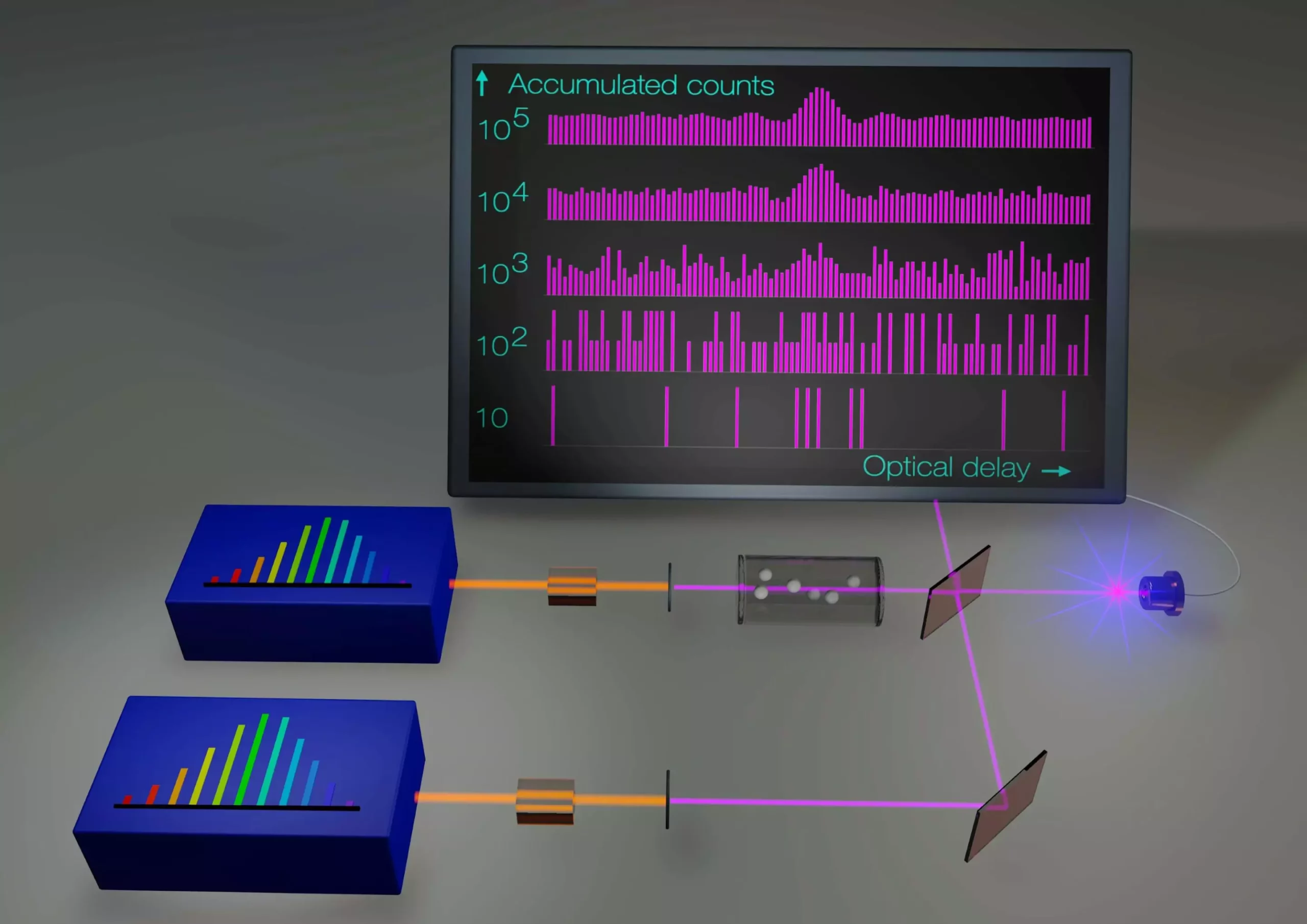Ultraviolet spectroscopy has long been a valuable tool in the study of electronic transitions in atoms and rovibronic transitions in molecules. This field of study plays a crucial role in fundamental physics, precision measurements, and various scientific applications. Recently, a group of scientists at the Max-Planck Institute of Quantum Optics has made a significant advancement in ultraviolet spectroscopy by successfully implementing high-resolution linear-absorption dual-comb spectroscopy in the ultraviolet spectral range. This breakthrough has opened up new possibilities for experiments under low-light conditions and has the potential to revolutionize the field of spectroscopy.
Dual-comb spectroscopy is a powerful technique that allows for precise spectroscopy over broad spectral bandwidths. Traditionally used for infrared linear absorption of small molecules in the gas phase, dual-comb spectroscopy relies on measuring the time-dependent interference between two frequency combs with slightly different repetition frequencies. These frequency combs act as rulers to measure the frequency of light with extreme precision. One limitation of traditional dual-comb spectroscopy is the requirement for intense laser beams, making it less suitable for scenarios where low light levels are critical.
The team at the Max-Planck Institute of Quantum Optics has demonstrated that dual-comb spectroscopy can be effectively utilized in low-light conditions at power levels more than a million times weaker than traditionally used. This breakthrough was made possible by developing a photon-level interferometer that accurately records the statistics of photon counting, showcasing a signal-to-noise ratio at the fundamental limit. The team used two distinct experimental setups with different types of frequency comb generators to achieve this feat.
The successful implementation of high-resolution linear-absorption dual-comb spectroscopy in the ultraviolet range opens up a world of possibilities for future applications. One exciting future prospect is the development of dual-comb spectroscopy at shorter wavelengths to enable precise vacuum- and extreme-ultraviolet molecular spectroscopy over broad spectral spans. Currently, extreme-UV spectroscopy is limited in resolution and relies on specialized instrumentation at specialized facilities. With the advancements made by the MPQ team, the full capabilities of dual-comb spectroscopy can be extended to low-light conditions, unlocking novel applications in precision spectroscopy, biomedical sensing, and environmental atmospheric sounding.
The groundbreaking achievement of implementing high-resolution linear-absorption dual-comb spectroscopy in the ultraviolet spectral range by the Max-Planck Institute of Quantum Optics represents a significant step forward in the field of ultraviolet spectroscopy. This advancement has the potential to revolutionize the way experiments are conducted under low-light conditions and opens up new possibilities for precision spectroscopy in various scientific and technological fields. The future of ultraviolet dual-comb spectroscopy is bright, thanks to the innovation and dedication of the MPQ research team.


Leave a Reply